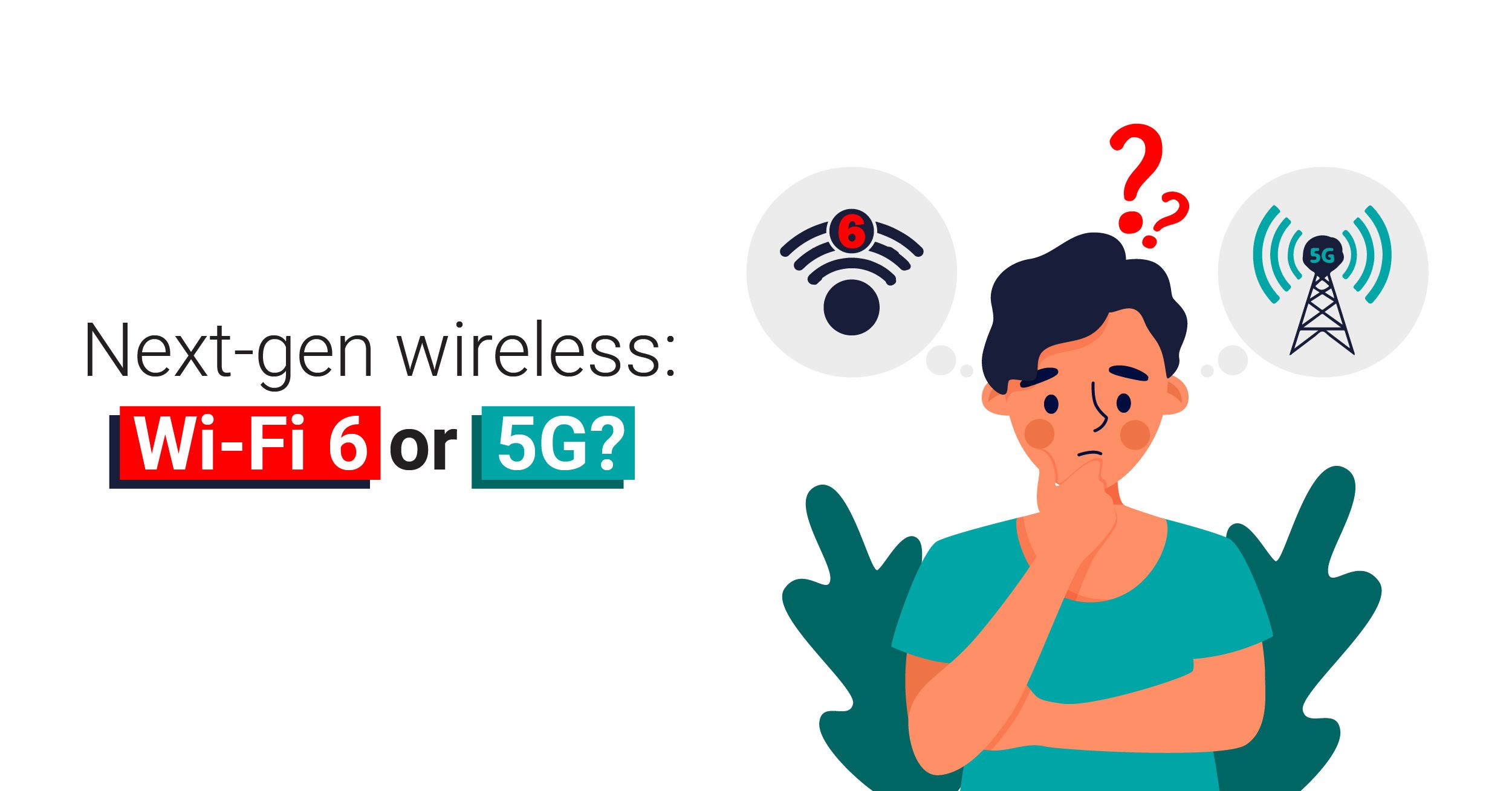
Next-gen wireless: Wi-Fi 6 or 5G?
As the world becomes more connected with greater numbers of people living and working remotely, organizations are looking towards the next best choice for wireless connectivity. While Wi-Fi was the only real option so far, people can now choose from Wi-Fi 6 or 5G as a service. Each comes with its own set of pros and cons—let’s take a look.
Wi-Fi 6
Wi-Fi 6 represents a massive technological improvement to Wi-Fi while remaining low-cost, with spectrum quality developments to cellular including OFDMA and MU-MIMO. Even so, Wi-Fi is not very reliable and can stop working suddenly, which is not an option for mission critical apps. With such a low cost, this is still a great option for general workers.
5G as a service
5G is no longer limited to mobile devices; 5G can now be used by companies too. While 5G has better connectivity, a single provider cannot offer 5G everywhere-- you often need more than one provider. Next to this, 5G is more expensive, and unlike Wi-Fi, data doesn't remain on site, but is sent to the provider network-- meaning there could be security issues.
Emerging tech and the future of wireless connectivity
With its high cost, 5G is too expensive to be used exclusively. However, mission-critical environments, like hospitals, should consider 5G. Wi-Fi 6 is still fine for general workers who aren't dependent on a highly reliable network. The optimal solution would be for companies to deploy both where needed, to get the benefits of both while avoiding the drawbacks.
Read the original article here.
Talk to us: Which form of wireless connection are you most interested by? Let us know in the comments below, we would love to hear from you!
Take a look at more top articles, trends and experts by signing up to our newsletter—By getting to choose which topics interest you the most, you get the latest news delivered with ease: https://essentials.news/tech/my-essentials